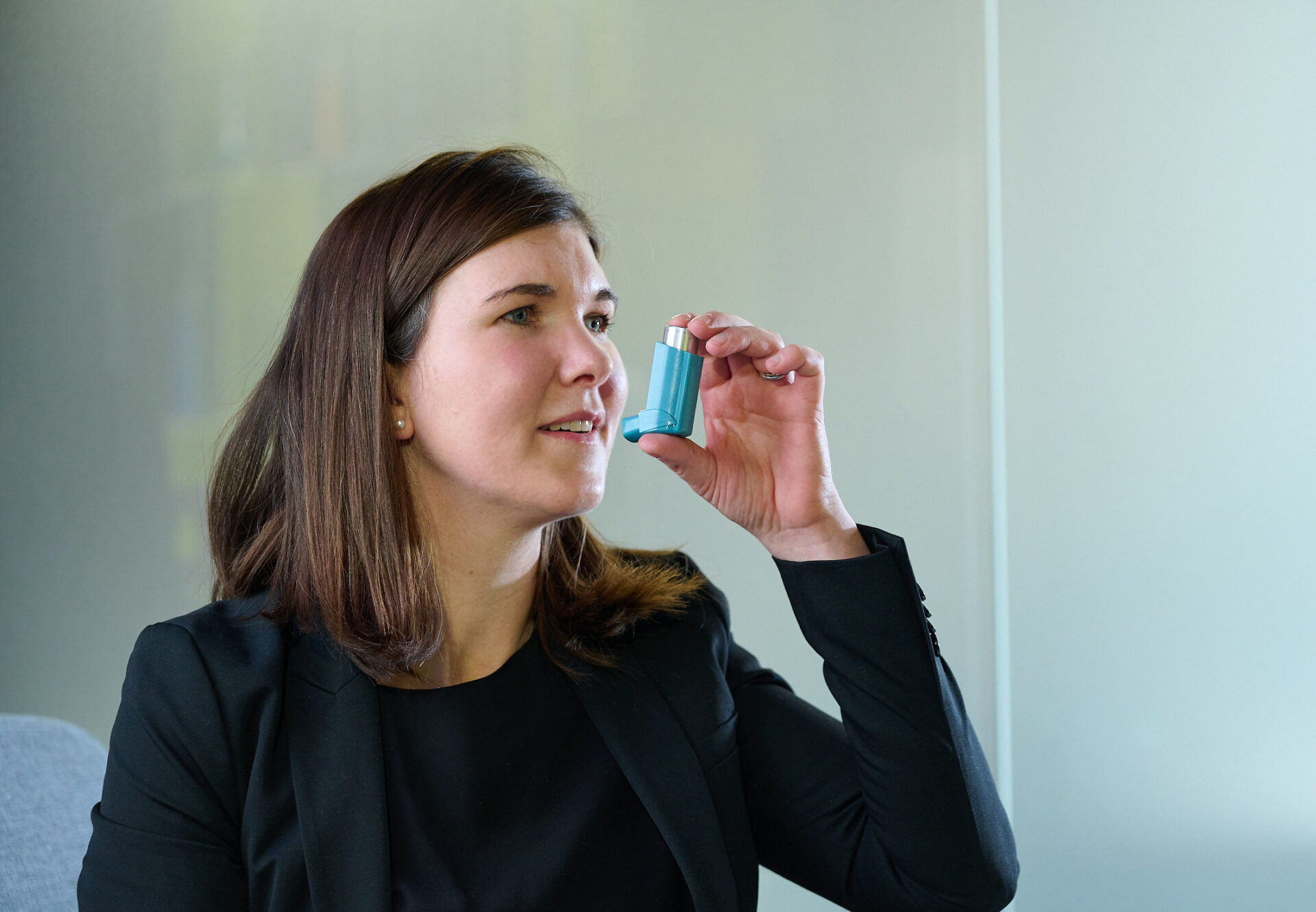Inhaler Devices for Asthma and COPD: Optimizing Patient Outcomes Through Technology

Inhaler devices play a pivotal role in the management of asthma and chronic obstructive pulmonary disease (COPD), two prevalent chronic respiratory conditions. These devices deliver medication directly to the lungs, providing targeted relief and managing symptoms effectively. As technology advances, inhaler devices have evolved significantly, offering new ways to enhance patient outcomes. This article explores the various types of Inhaler devices available for asthma and COPD, examines the role of technological innovations in improving treatment, and offers guidance on optimizing patient outcomes through these advanced tools.
Types of Inhaler Devices for Asthma and COPD
Metered-Dose Inhalers (MDIs)
Overview
Metered-Dose Inhalers (MDIs) are among the most commonly used inhaler devices. They deliver medication in a fine mist or aerosol form, which is inhaled directly into the lungs. MDIs are often used for both quick-relief (rescue) and long-term control medications.
Features
- Pressurized Canister: Contains medication in a pressurized form, which is released as an aerosol.
- Metering Valve: Provides a precise dose with each actuation, ensuring consistent medication delivery.
- Spacer Option: Can be used with a spacer device to enhance medication delivery and reduce the need for precise coordination.
Advantages
- Precision: Accurate dosing with each use.
- Versatility: Suitable for a wide range of medications.
- Portability: Compact and easy to carry.
Considerations
- Coordination Required: Requires coordination between pressing the canister and inhaling, which may be challenging for some patients.
- Technique Sensitivity: Proper inhalation technique is essential for effective medication delivery.
Dry Powder Inhalers (DPIs)
Overview
Dry Powder Inhalers (DPIs) deliver medication in a powdered form. Unlike MDIs, DPIs are activated by the patient’s breath, which disperses the powder for inhalation.
Features
- Powdered Medication: Medication is delivered as a dry powder.
- Breath-Actuated: Activated by inhaling deeply through the device.
- No Propellants: Does not use propellants, making it an environmentally friendly option.
Advantages
- Ease of Use: Generally easier to use for patients with poor manual dexterity.
- No Coordination Needed: Eliminates the need for precise hand-breath coordination.
- Environmental Impact: Avoids the environmental concerns associated with propellants.
Considerations
- Breath Strength Required: Requires a strong, steady breath to activate the device effectively.
- Device Maintenance: Must be kept dry to prevent medication from clumping.
Nebulizers
Overview
Nebulizers convert liquid medication into a fine mist, which can be inhaled over several minutes. They are particularly useful for patients who have difficulty using MDIs or DPIs or require prolonged medication delivery.
Features
- Mist Formation: Converts liquid medication into an aerosol mist for inhalation.
- Extended Delivery: Medication is delivered over a longer period.
- Ease of Use: Requires less precise technique compared to MDIs and DPIs.
Advantages
- Suitable for All Ages: Ideal for young children, elderly patients, and those with severe symptoms.
- Prolonged Treatment: Provides extended medication delivery for more effective management.
Considerations
- Treatment Duration: Takes longer to administer compared to MDIs and DPIs.
- Portability: Less portable due to its size and the need for power sources.
Technological Innovations Enhancing Inhaler Devices
Smart Inhalers
Overview
Smart inhalers incorporate digital technology to monitor and track medication use, providing valuable data for patients and healthcare providers.
Features
- Digital Sensors: Track usage patterns, inhalation technique, and adherence.
- Mobile App Integration: Syncs with mobile apps to provide reminders and real-time feedback.
- Data Sharing: Allows healthcare providers to access data for personalized treatment adjustments.
Benefits
- Improved Adherence: Reminders and tracking help ensure that patients take their medication as prescribed.
- Enhanced Technique: Real-time feedback helps patients improve their inhalation technique.
- Informed Decision-Making: Data integration enables more informed treatment decisions and adjustments.
Personalized Inhaler Devices
Overview
Personalized inhaler devices are tailored to meet the specific needs and preferences of individual patients, providing a more customized treatment experience.
Features
- Customizable Dosing: Adjusts medication delivery based on the patient’s condition and needs.
- Patient-Centric Design: Designed to accommodate individual preferences and requirements.
Benefits
- Optimized Treatment: Ensures that patients receive the most effective medication regimen for their specific condition.
- Improved Adherence: Personalized features enhance adherence to treatment plans.
- Better Outcomes: Tailored treatment plans lead to better symptom control and management.
Advanced Delivery Systems
Overview
Recent advancements in inhaler technology have led to the development of more sophisticated delivery systems that improve medication efficacy and patient comfort.
Features
- Breath-Enhanced Nebulizers: Incorporate technology to optimize medication delivery based on breathing patterns.
- Ergonomic Designs: New inhalers are designed to be more comfortable and user-friendly.
- Integrated Sensors: Advanced sensors monitor and adjust medication delivery for optimal effectiveness.
Benefits
- Enhanced Efficacy: Improved delivery systems ensure that medication reaches the target areas in the lungs more effectively.
- Increased Comfort: Ergonomic designs enhance patient comfort and ease of use.
- Faster Treatment: Advances in technology lead to more efficient treatment administration.
Optimizing Patient Outcomes with Inhaler Devices
Education and Training
Importance
Proper education and training are crucial for ensuring that patients use their inhaler devices effectively and adhere to their treatment regimens.
Strategies
- Demonstrations: Provide hands-on demonstrations to teach patients the correct technique for using their inhaler devices.
- Educational Materials: Offer brochures, videos, and other resources to reinforce proper use and technique.
- Regular Follow-Up: Conduct regular follow-up visits to assess technique, address any issues, and provide additional support.
Adherence Strategies
Importance
Adherence to prescribed medication regimens is essential for managing asthma and COPD effectively.
Strategies
- Reminders: Use digital reminders and alerts to help patients remember to take their medication.
- Simplified Regimens: Minimize the number of devices or doses required to improve adherence.
- Patient Engagement: Involve patients in their treatment planning and goal setting to enhance motivation and commitment.
Addressing Common Challenges
Coordination Issues
- For MDIs: Use spacers to help patients with coordination issues achieve better medication delivery.
- For DPIs: Ensure that patients understand the need for a strong, steady breath.
Device Maintenance
- For DPIs: Instruct patients on proper storage and handling to prevent clumping of the medication.
- For Nebulizers: Emphasize the importance of regular cleaning and maintenance to prevent contamination.
Innovations in Patient Support
Telemedicine and Remote Monitoring
- Overview: Telemedicine and remote monitoring technologies provide additional support for patients managing asthma and COPD.
- Benefits: Enables remote consultations, real-time monitoring, and personalized care adjustments based on patient data.
Interactive Platforms
- Overview: Interactive platforms and apps offer additional resources for patient education and engagement.
- Benefits: Provides personalized feedback, educational content, and tools for tracking and managing respiratory health.
Future Directions
Emerging Technologies
- Nanotechnology: Potential for improving medication delivery and targeting specific areas of the lungs.
- Artificial Intelligence: AI-driven solutions for personalized treatment recommendations and real-time monitoring.
Patient-Centric Innovations
- Customized Devices: Continued development of devices tailored to individual patient needs and preferences.
- Integrated Solutions: Combining inhaler devices with broader respiratory management systems for comprehensive care.
Conclusion
The evolution of Inhaler devices has significantly enhanced the management of asthma and COPD, offering improved precision, ease of use, and effectiveness. From the early days of rudimentary tools to the latest technological advancements, inhaler devices have continually adapted to meet the needs of patients and healthcare providers.
Technological innovations such as smart inhalers, personalized devices, and advanced delivery systems have transformed respiratory care, optimizing patient outcomes through improved medication delivery and adherence. By focusing on education, adherence strategies, and addressing common challenges, healthcare providers can further enhance the effectiveness of inhaler devices and support patients in achieving better respiratory health.
As technology continues to advance, the future of inhaler devices promises even greater improvements in patient care and management. Embracing these innovations and staying informed about emerging trends will help ensure that patients with asthma and COPD receive the best possible treatment and support for their chronic conditions.




